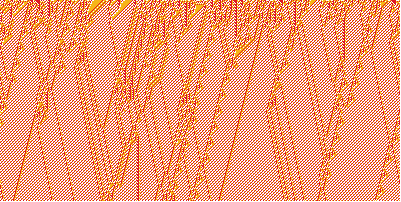Alumni

Bio
Jacob West received his Bachelor’s in Science in physics from the California Institute of Technology. He is currently applying to graduate schools and will continue pursuing theoretical physics in the fall of 2004. In addition to physics, his intellectual interests include computation and complexity, learning and intelligence, and large-scale networks (physical, virtual, and social). Jake also enjoys motorcycles, martial arts, hiking, camping, and music.
Project: Causally Invariant and Reversible General Substitution Systems
For a network to be physically allowable, it must obey certain constraints that are consistent with our observations of the natural world. Specifically, the network must exhibit causal invariance such that the evolution of the network is independent of the order in which the network rules are applied. The network must also exhibit reversibility meaning that evolution can be run both forward and backward in time, thus allowing for a consistent history. Furthermore, the network rules must preserve the general structure of the network as it evolves (to avoid spontaneous creation or destruction of matter) but allow for perturbations of the network structure during interactions between existing structures, as one would expect from the general observations of particle physics. Dealing with arbitrary networks is in general very difficult, and as a consequence we will focus here on a particular simplified model for causal networks corresponding to general substitution systems specifically designed to obey the rules required by physically reasonable systems as described. Using these systems, we will investigate which rules, initial conditions, or combinations therein lead to persistent structures with the “signature of a particle.
Favorite Three-Color Cellular Automaton
Rule Chosen: 7451701393334

Reason: We have found several very interesting nearest-neighbor 3 color cellular automata by using the technique of randomly searching the entire space of these systems. It is possible to use this approach here because the likelihood of finding more complicated behavior among these systems is far greater than say the 256 simplest nearest-neighbor 2 color cellular automata, primarily because the slightly greater amount of complexity in the rule sets leads to an astronomically larger number of possible systems. Hence, we are able to avoid the far more computationally intensive approach of exhaustive searches. Again, this is only possible because we were looking for any form of “interesting” behavior among these systems rather than more specific inquiries like what is the simplest rule that leads to complicated behavior, or how many of these systems exhibit class 4 behavior; such questions can only be adequately answered with an exhaustive search for the specific behavior in question. And finally, many of these systems, including the ones discussed and many of those that were not, are certainly deserving of further and more in-depth investigation.